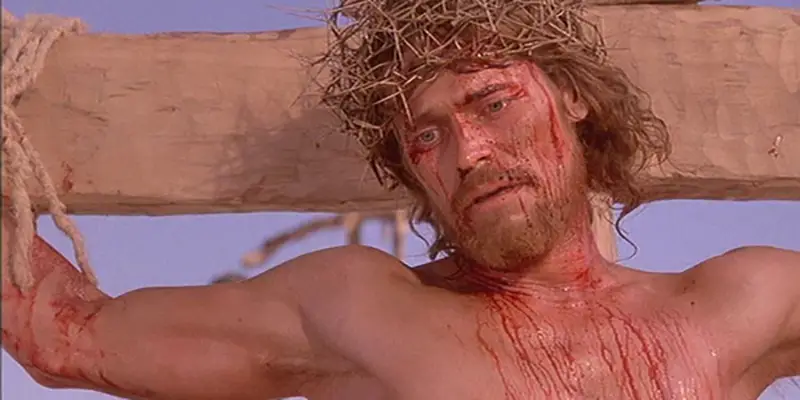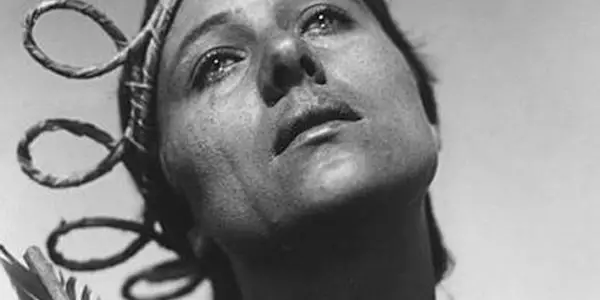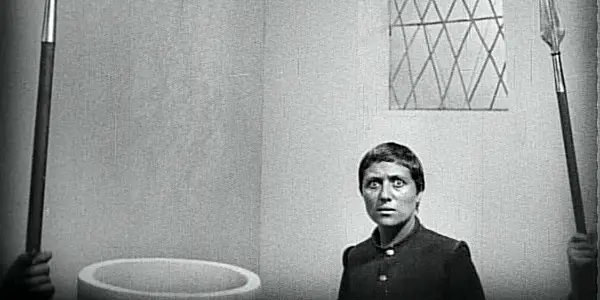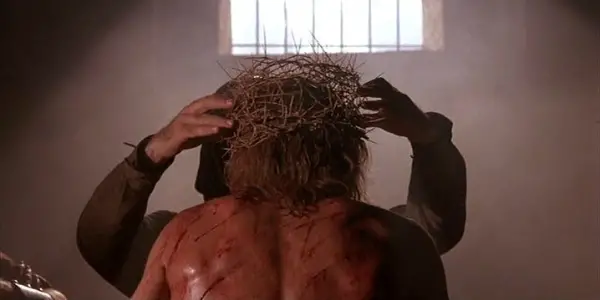The Divine Sacrifice Of Humanity In THE PASSION OF JOAN OF ARC & THE LAST TEMPTATION OF CHRIST

Chris is a B.A.H. graduate with a concentration in pre-19th…
Religious figures and various saints have been on film since the birth of the medium. It can be tricky for a director to present the story of a venerated character, as they can mean many things to different people. In both Carl Theodor Dreyer’s The Passion of Joan of Arc and the Martin Scorsese picture The Last Temptation of Christ, the directors brought their own religious visions to screen, although not without controversy. However, their respective examinations of religion have lasted the test of time. This is due to how Dreyer and Scorsese humanise the concept of divinity, illustrated by the separate journeys of Joan of Arc and Jesus Christ.
The two characters are depictions of faith in two distinctly separate visions. Joan’s faith, in the film by Dreyer, is actually more concrete, and only near the end does she waiver. In opposition, Jesus isn’t sure until his last moments on the cross that his faith is pure, finally accepting the fact that he is God’s son. By the end both characters accept their divinity. It’s how the directors present their trials and tribulations which ultimately defines the way humanity plays a part in their journey. Joan must go through an actual trial in court to have her faith determined by others, whereas Jesus is tasked with wandering the desert in his figurative, psychological trial.
Psychology v. Fantasy
Dreyer presents The Passion of Joan of Arc through a lens of psychological realism. The set itself was built expressly to represent the psychological intensity of Joan’s experience: the courtroom is set on odd angles which at times calls to mind the techniques of German Expressionism; certain shots were achieved by literally digging holes in the set to shoot from extreme low angles to give those opposing Joan in the courtroom a vastly larger than life, looming feel.
Slowly, human fear and worry is what tempts Joan to renounce her statements on God. Her temptation is to save herself from pain through renouncing what she has said, yet she cannot renounce what she truly believes. Therefore, Joan’s journey is largely out of her hands; she can’t control her belief any more than she can the law of the court. In this light, Joan follows the same path as Jesus, whose crucifixion brought on the definitive test of his faith.

In The Last Temptation of Christ, Jesus is decidedly human and does not feel he is any son of God. Rather, he doesn’t want to be the son of God, and suffers through visions he feels God is giving him. Scorsese opts to go for a fantastical, hallucinatory journey for Jesus to discover his humanity, all in order to give it up so he can accept divinity.
Along the way, Jesus sees visions of a snake, a lion, the tree in the Garden of Eden, the apple, and other imagery; these represent the word of God as a torturous nightmare in Jesus’ head. His temptation is to indulge himself and renounce both faith and fate, in a sense. His inner journey is different and yet parallel to the outer journey of Joan’s faith in the courtroom.
Death is Not the End
Joan and Jesus have parallel ends to their suffering. Joan’s realisation comes after they shave her head, and her humanity is laid bare – afterwards, she demands the judges let her recant. But she cannot deny the divinity she feels and will not renounce her faith. In fact, she renounces her humanity by accepting the fate ahead of her for supposed heresy. Similarly, Jesus crawls through burning Jerusalem after experiencing a vision of his future and of the world, and begs God: “I want to be your son!” He is then returned to the cross, having fully known his human side and accepting that he is the son of God.

Joan and Jesus come to comparative ends. In one important respect, they differ. For Jesus, because he is already part divine, he has been given a window into the eventual world beyond the one he knows. He even tells Judas: “Death isn’t a door that closes; it opens. It opens and you go through it.” So before giving himself over to death and crossing over into divinity, Jesus understands the end to his sacrifice.
Joan does not have such a safety net. For her, divinity is not sure outside of herself. She knows, with little doubt, that God is real and believes wholeheartedly in his existence. But she doesn’t, like Jesus, know for sure. So the leap of faith by renouncing her statements and accepting full punishment for her beliefs is therefore more drastic. This is a difference best noticed in their executions.
From Human to Divine
In their last moments, Joan and Jesus renounce flesh and blood to wholly become divine beings. This is juxtaposed in the looks on their faces before death takes them from the physical plane into the spiritual. The one major difference is that Joan goes through every last bit of pain in order to transcend the flesh. Jesus is merely shown a vision of pain before he accepts his birthright as God’s only son and the pain is taken away; he goes through it, but the experience is essentially a vivid dream. Despite this, both characters must endure the suffering of being human, in all its various forms.

Jesus’ final moment fades into an actual overexposure of the film reel, giving the scene and film a serendipitous finish. In like fashion, Joan’s death is more violent but fades away into the smoke of the fire burning around her. The experiences of Joan and Jesus, though different in visual representation and in their eventual executions, are based upon total acceptance of faith and overcoming humanity’s limits to thoroughly gain their place amongst the sacred figures of a metaphysical realm.
Conclusion
Effectively, Dreyer and Scorsese take us through the concept of sainthood. Those accepted to this higher calling must go through torture, both mentally and then physically, followed by death to transcend their humanity into full divinity. While Jesus is clearly higher than a saint, the trials through which he goes are no different than those of Joan; he is, by all definitions of the word, a martyr. The most significant difference is Jesus must prove to himself that he wants to be divine and is given superior knowledge from God, which is why his death is less brutal on film.
Joan has to die for her beliefs, to prove to others the depth of her faith, and all without any foresight into what lies beyond death. This is the chief reason Joan’s journey culminates in a genuinely horrific act of violence perpetrated against her. Even her burning compared to the depiction of Jesus’ crucifixion is visually more disturbing.
Dreyer’s psychological realism allows the viewer to experience Joan’s situational horror, as her faith is questioned to fatal lengths. Scorsese uses a more humanistic approach to the story of Christ, though he represents the journey in a film that plays like a visually exotic fantasy. In the end, their humanity is the true sacrifice, and both films touch on the human aspect of religious experience through this martyrdom.
For the religious, do either of these films represent your own humanistic approach to religion? For the non-religious, does either Dreyer or Scorsese speak to you beyond the scope of their religious views?
Does content like this matter to you?
Become a Member and support film journalism. Unlock access to all of Film Inquiry`s great articles. Join a community of like-minded readers who are passionate about cinema - get access to our private members Network, give back to independent filmmakers, and more.
Chris is a B.A.H. graduate with a concentration in pre-19th century literature from Memorial University of Newfoundland. His short stories have been published in The Cuffer Anthology Volumes VI & VII, as well as upcoming stories in new anthologies from Centum Press (One Hundred Voices & One Hundred Voices Pt. II) and Science Fiction Reader. A short screenplay of his titled "New Woman" is currently being produced, to be shot in 2017; it is a female-led dramatic horror, a period piece set in 1888.













